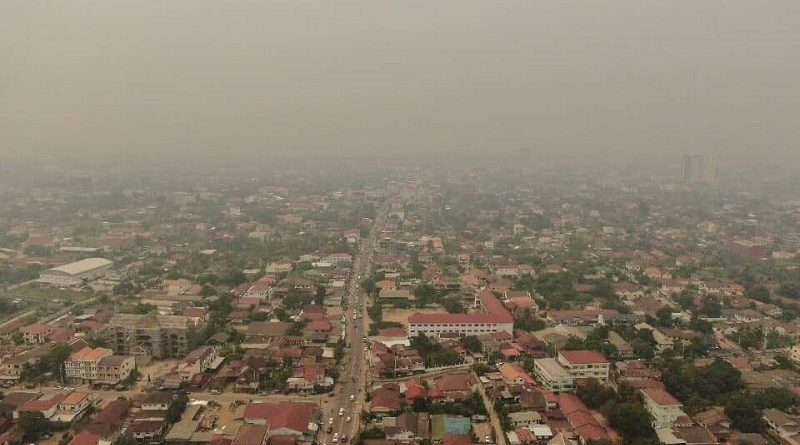Health Ministry Issues Warning Over Air Pollution
Source: Vientiane Times
The Ministry of Health is urging citizens, especially those in high-risk groups, to take steps to safeguard their health as air pollution soars to harmful levels across Laos.
Air Quality Index levels over 101, beyond recommended safe levels, have been reported in multiple provinces in recent weeks, including in Vientiane, with provinces in the north most impacted, according to the Ministry of Natural Resources and Environment.
Vientiane has been covered in varying levels of haze for many weeks, with PM2.5 levels greatly exceeding safe levels and having the potential to affect people’s health, the Meteorology and Hydrology Department of the Ministry of Natural Resources and Environment has warned.

Air pollution severity, which is measured by the amount of airborne particulate matter (referred to as PM2.5), is commonly reported as the Air Quality Index (AQI), a rating system that is used to indicate the severity of air pollution caused by a variety of pollutants, which in the current situation in Laos is smoke generated by the burning of vegetation.
The higher the AQI number, the higher the level of air pollution and the higher the health risk, according to the Ministry of Health.
“We are urging all citizens, particularly those in high-risk groups, to take note of air pollution levels in their area, do their part to reduce harmful emissions as much as possible, and take steps to protect their health,” a medical specialist said.
“At very high levels, air pollution is a health hazard for all citizens and leads to long-term health problems. People who are more vulnerable, particularly children, older people, pregnant women, and people with respiratory conditions like asthma, or other existing health conditions, need to be particularly vigilant.”
“Reducing air pollution in homes and communities is a top priority,” he added.
In the short term, symptoms caused by air pollution can include eye, nose, throat and lung irritation; coughing, sneezing, runny nose, and shortness of breath; and worsening symptoms of other diseases including asthma.
In the long-term, exposure to air pollution and high levels of airborne particulate matter can cause strokes, heart disease, lung cancer, and both chronic and acute respiratory diseases. Exposure is cumulative, building over a person’s lifetime and increasing their risk.
The people most at risk are those living with asthma or other conditions including Chronic Obstructive Pulmonary Disease, respiratory allergies, hypertension, diabetes, and obesity.
People who live or work in areas with constant or regular high levels of pollution are likely to be more severely affected.


